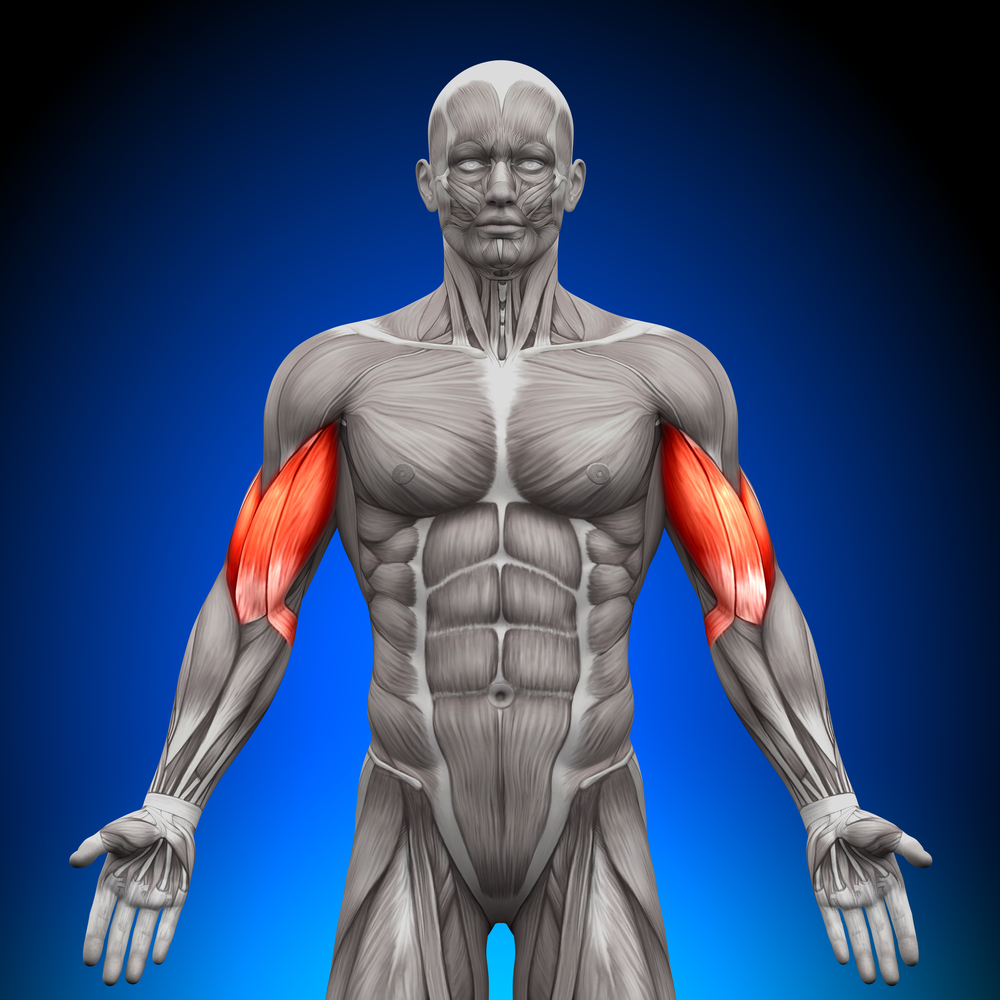Zottman curls date all the way back to the 1800s when American strongman George Zottman performed the exercise regularly.
He was known for having some truly large arms for the time.
Nowadays, they’re not as popular but they certainly have some great arm-building qualities that can’t be ignored.
If you’re unsure what Zottman curls are, they involve lifting dumbbells while rotating your wrists to change your hand position throughout the exercise.
You start with a supinated grip (palms up) during the upward phase of the movement, before rotating your wrists so your grip changes to pronated (palms down) for the lowering phase.
You then rotate your wrists back to a supinated grip before performing the next rep.
In this article, we look at which bicep head Zottman curls work to see how they can help you build bigger and stronger arms.
Which Bicep Head Do Zottman Curls Work?
One of the best things about Zottman curls is that they work several muscles during the movement including both heads of your biceps.
During the upward phase of the exercise, when your palms are in a supinated (palms-up) position, your short head will be under a bit more stress than the long head.
However, during the lowering phase of the movement, when your palms are in a pronated (palms-down) position, it’s the long head that has more work to do.
Other muscles are also engaging during Zottman curls so you can’t isolate just the working head of your biceps.
Both heads are certainly worked throughout the exercise though making them a great all-round bicep-building exercise.
How To Target The Long Head More
The long head of your bicep has to work harder during the eccentric (lowering) phase of Zottman curls than it does during the concentric (lifting) phase.
Working your muscles during the eccentric phase has different benefits from working them through the concentric phase.
With this in mind, performing reverse Zottman curls can be a good way of making the long head of your biceps work in a different way.
Reverse Zottman curls involve using a pronated grip for the upward phase of the exercise before rotating to a supinated grip for the lowering phase.
While this still works both heads of the biceps, it works them during the opposite phase of the movement.
How To Target The Short Head More
As the short head of your biceps works harder during the lifting phase of the exercise, performing them with alternate arms could be beneficial to ensuring as much activation as possible from the working muscles.
Zottman curls are usually performed by both arms simultaneously.
While they’re highly effective when done in this way, it can be easier to make a mistake in the technique if you’re focusing on both arms at the same time.
Performing alternate arm Zottman curls allows you to focus fully on the working arm to ensure your technique is correct and the appropriate muscles (and bicep head) are working to make the movement happen.
What Other Muscles Do Zottman Curls Work?
The main muscles being worked during Zottman curls are your biceps.
However, Zottman curls also work your brachioradialis and your brachialis.
The brachioradialis is a muscle in your forearm and your brachialis is a muscle that sits underneath your biceps.
Both of them help make your biceps look bigger as they develop, so they’re definitely useful muscles to work.
Zottman curls are a great arm-building exercise as they work a good portion of the muscles that help give you fuller, larger, and stronger arms.
The Anatomy Of The Biceps

Your biceps is an upper arm muscle that is located between your shoulder and your elbow.
It is considered a fairly large muscle and it is responsible for flexing your elbow as well as rotating your forearm.
Building big biceps is a goal that many gym-goers have as it tends to give a strong appearance of fitness and strength.
The commonly used “biceps” actually originates from the Latin term “biceps brachii”.
This translates to “two-headed muscle of the upper arm”.
This is a great way of explaining the anatomy of the biceps in very simple terms. It’s a muscle in the upper arm that is made up of two heads – the long head and the short head.
Each head has a different impact on the overall look of your biceps.
If you do lots of work on the long head of your biceps, you should end up with a large (and highly sought-after) biceps peak.
If you put more focus on the short head of your biceps, this adds thickness or width to the muscle giving your arms a fuller appearance.
Sources
I’ve been in the fitness and strength training industry for nearly a decade. In that time, I’ve gained 30 pounds of muscle, written hundreds of articles, and reviewed dozens of fitness supplements. As for my educational background, I’m a currently studying for my Active IQ Level 3 Diploma in Personal Training.

